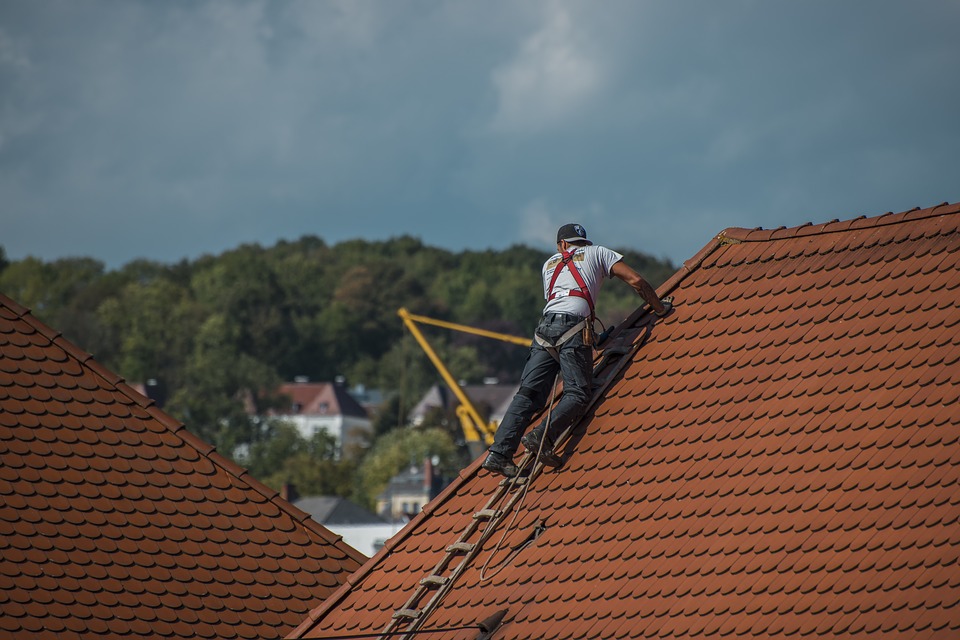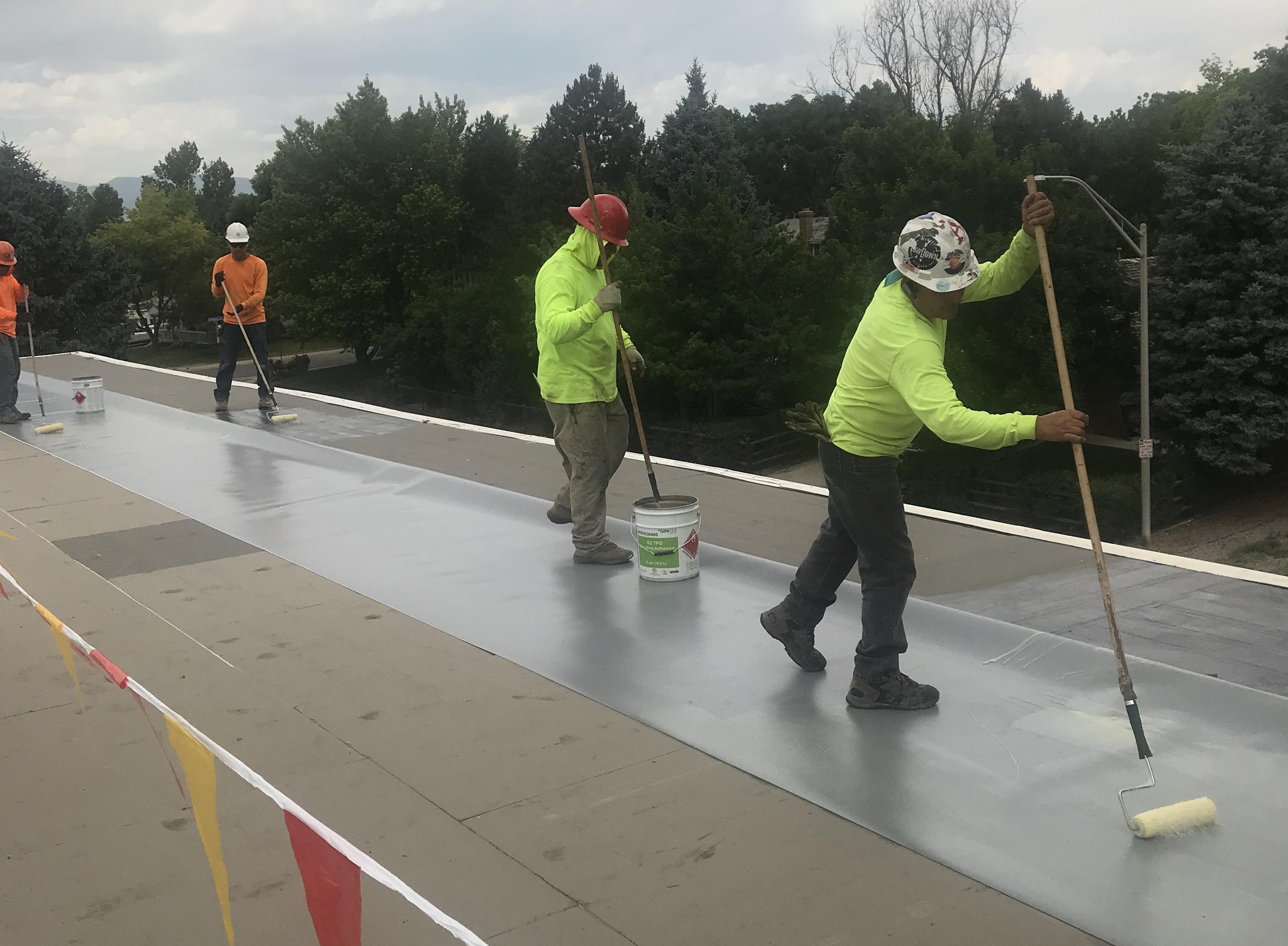Commercial buildings are susceptible to roof damage and the roofs need to be maintained and repaired on an ongoing basis. If you catch problems in the early stages, you can prevent significant damage which can be costly to repair. Of course, this means you must inspect your roof routinely, so you know when to call in the roofing contractors. Knowing the types of roof damage to look for in commercial buildings and how to remedy them is essential.
 Commercial roof repair is the natural response to many of the problems outlined above. However, preventative maintenance solutions are also key to extending the life of a roof. For example, many leaks can be prevented with a proactive maintenance program to prevent water from seeping inside.
Some problems can be addressed as soon as they appear. For instance, drainage issues should be addressed through the addition of more drains or tapered roof insulation. Insecure flashings may also need to be dealt with.
For single-ply roofing systems like EPDM which can be vulnerable to punctures, limiting foot traffic and conducting inspections after workmen have been on the roof can be helpful.
Notably, one of the key ways to manage roof damage is to ensure that only certified and licensed technicians work on your roof. If commercial roof repair is carried out by untrained people, you will likely need to look for additional solutions further down the road
Commercial roof repair is the natural response to many of the problems outlined above. However, preventative maintenance solutions are also key to extending the life of a roof. For example, many leaks can be prevented with a proactive maintenance program to prevent water from seeping inside.
Some problems can be addressed as soon as they appear. For instance, drainage issues should be addressed through the addition of more drains or tapered roof insulation. Insecure flashings may also need to be dealt with.
For single-ply roofing systems like EPDM which can be vulnerable to punctures, limiting foot traffic and conducting inspections after workmen have been on the roof can be helpful.
Notably, one of the key ways to manage roof damage is to ensure that only certified and licensed technicians work on your roof. If commercial roof repair is carried out by untrained people, you will likely need to look for additional solutions further down the road
 Don’t delay in seeking the services of commercial roofing contractors. Problems which seem minor at first can worsen quickly if they are not addressed. That’s why you need to call Arvada Roofing and Home Improvement. We will:
Inspect your roof for free
Offer a comprehensive range of commercial roofing services
Bring more than ten years’ experience to the job
Work with Chubb, State Farm, Farmers, Allstate, and other insurance companies if necessary, to get your repair work approved
Call us today and let us give you the peace of mind you deserve.
Don’t delay in seeking the services of commercial roofing contractors. Problems which seem minor at first can worsen quickly if they are not addressed. That’s why you need to call Arvada Roofing and Home Improvement. We will:
Inspect your roof for free
Offer a comprehensive range of commercial roofing services
Bring more than ten years’ experience to the job
Work with Chubb, State Farm, Farmers, Allstate, and other insurance companies if necessary, to get your repair work approved
Call us today and let us give you the peace of mind you deserve.
Types of Damage Commonly Found in Commercial Roofing Systems
There are six types of damage which often occur in commercial roofing systems.- Sagging or stained ceilings
- Mold or odors
- Blisters or bubbles on the roof surface
- Plant growth
- Standing water
- Clogged drains
Common Commercial Roof Repair and Maintenance Solutions Which Are Often Necessary
 Commercial roof repair is the natural response to many of the problems outlined above. However, preventative maintenance solutions are also key to extending the life of a roof. For example, many leaks can be prevented with a proactive maintenance program to prevent water from seeping inside.
Some problems can be addressed as soon as they appear. For instance, drainage issues should be addressed through the addition of more drains or tapered roof insulation. Insecure flashings may also need to be dealt with.
For single-ply roofing systems like EPDM which can be vulnerable to punctures, limiting foot traffic and conducting inspections after workmen have been on the roof can be helpful.
Notably, one of the key ways to manage roof damage is to ensure that only certified and licensed technicians work on your roof. If commercial roof repair is carried out by untrained people, you will likely need to look for additional solutions further down the road
Commercial roof repair is the natural response to many of the problems outlined above. However, preventative maintenance solutions are also key to extending the life of a roof. For example, many leaks can be prevented with a proactive maintenance program to prevent water from seeping inside.
Some problems can be addressed as soon as they appear. For instance, drainage issues should be addressed through the addition of more drains or tapered roof insulation. Insecure flashings may also need to be dealt with.
For single-ply roofing systems like EPDM which can be vulnerable to punctures, limiting foot traffic and conducting inspections after workmen have been on the roof can be helpful.
Notably, one of the key ways to manage roof damage is to ensure that only certified and licensed technicians work on your roof. If commercial roof repair is carried out by untrained people, you will likely need to look for additional solutions further down the road
Reach out to Professional Commercial Roofing Contractors in Arvada, CO
 Don’t delay in seeking the services of commercial roofing contractors. Problems which seem minor at first can worsen quickly if they are not addressed. That’s why you need to call Arvada Roofing and Home Improvement. We will:
Inspect your roof for free
Offer a comprehensive range of commercial roofing services
Bring more than ten years’ experience to the job
Work with Chubb, State Farm, Farmers, Allstate, and other insurance companies if necessary, to get your repair work approved
Call us today and let us give you the peace of mind you deserve.
Don’t delay in seeking the services of commercial roofing contractors. Problems which seem minor at first can worsen quickly if they are not addressed. That’s why you need to call Arvada Roofing and Home Improvement. We will:
Inspect your roof for free
Offer a comprehensive range of commercial roofing services
Bring more than ten years’ experience to the job
Work with Chubb, State Farm, Farmers, Allstate, and other insurance companies if necessary, to get your repair work approved
Call us today and let us give you the peace of mind you deserve. 




